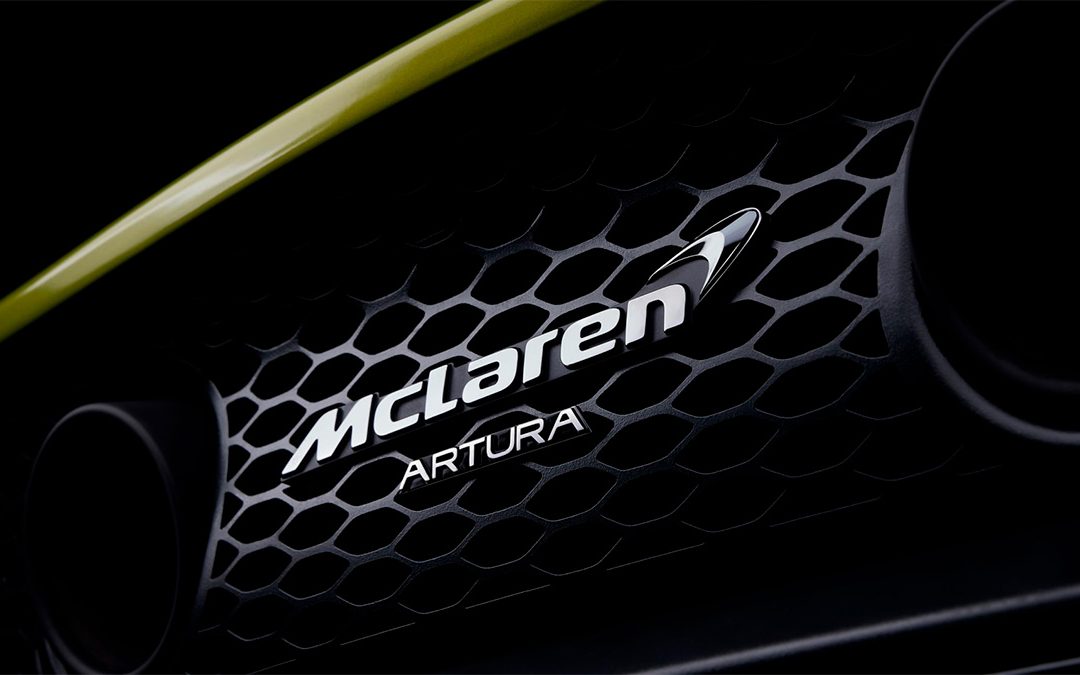From our partners: To create a plug-in hybrid, McLaren defined its engineering then followed with design.
BY ELITE TRAVELER | JUNE 7 2022

From the powertrain to the monocoque, many major parts of the McLaren Artura’s design are completely new. This meant that creating the accompanying systems, like the aerodynamics and aerothermal, required the latest construction methods.
McLaren chose superformed aluminum – where metal is shaped at over 500°C – as opposed to a more conventional panel stamping to achieve supercar proportions and impressive performance figures. Yes, it takes a powerful engine to go from 0-60 mph in three seconds, but it also requires precise design.
Reducing the quantity of panels by 85% not only aided in McLaren’s constant fixation with lightness, but began to create the most recent design language for the brand. Take, for example, the rear clamshell; minimal body shutlines and panel joints conjure a sculpted smoothness that allows the eye to perceive the entire back of Artura in one glance. It alludes to words like straightforward and stunning all at once as the body panels and dihedral doors appear as if they are shrink-wrapped with definition.
To harness airflow to maximum effect, features such as new hidden door inlet ducts and rear buttresses channel air over, under and through the body. The rear spoiler and diffuser generate 50kg of downforce for ultimate stability. Guiding not only clean air through the vehicle, but cooling air for the eHVAC system and the low temperature radiators, McLaren’s aerothermal technologies push heat away the powertrain chimney and feed the rear spoiler.
The notion of necessary
Mclaren Artura’s design redefines the notion of “necessary”. Edited down so that every element fulfills a job while remaining sculpturally interesting, ruminate on words like airflow and downforce. They are often used but seldom strictly defined.
What one could perceive as the smallest detail – the vented louvers on the front fenders for example – are precisely molded to reduce pressure to the wheel arches and push soiled air away from the side intakes. Simultaneously, the sculpted door channels guide clean air into those intakes. Inherently, this enhances driver and passenger comfort but is oft overlooked.
The interior follows a similar process of extreme rationality. Built around and for the driver, the cockpit was designed by McLaren’s ‘eyes on the road, hands on the wheel’ approach. They can be adjusted and fine-tuned while the driver’s hands remain on the steering wheel.
For example: driving mode selection – which retains separate powertrain and handling controls – has been moved to the instrument binnacle, which is in turn mounted to the steering column and adjusts with the steering wheel to further enhance driving ergonomics. Consequently, the steering wheel is kept clear of unnecessary switches.

The engine chain drive is located at the rear of the V6 engine reducing noise intrusion into the cabin / ©McLaren
Designed in tandem
Although performance is principal, McLaren Artura’s design also considers comfort. Building on lessons learned during the development of the GT and Speedtail, McLaren engineers evaluated sound levels in an entirely new light.
Unlike any other McLaren, Artura will run for part of the time in silent mode, which means more complex challenges than a vehicle powered only by an internal combustion engine.
Developing interior and exterior in tandem meant that, for example, the engine chain drive being located at the rear of the all-new V6 would automatically reduce noise intrusion into the cabin.
The monocoque itself plays a key role in refinement, not only through its structural consistency and stiffness but also in the way it is integrated; in the McLaren Senna, for example, the carbon fiber chassis was used to amplify the low-frequency sounds into the cabin, while in the Artura specific work was undertaken to actively eliminate this effect in order to maximize refinement during everyday use.
Alcantara or Nappa leather appears on almost every surface in the interior, with the Extended Nappa Leather specification covering the whole cabin, including the doors, rear parcel shelf, central tunnel and lower dashboard.
Always one to reduce weight, McLaren worked with longtime collaborator Bridge of Weir to create a leather that is the same thickness and feel as the regular material. One key difference: aerating the back.
A subtle but thoughtful change, and a perfect example of how McLaren reexamined and optimized every item that enters its vehicles.


